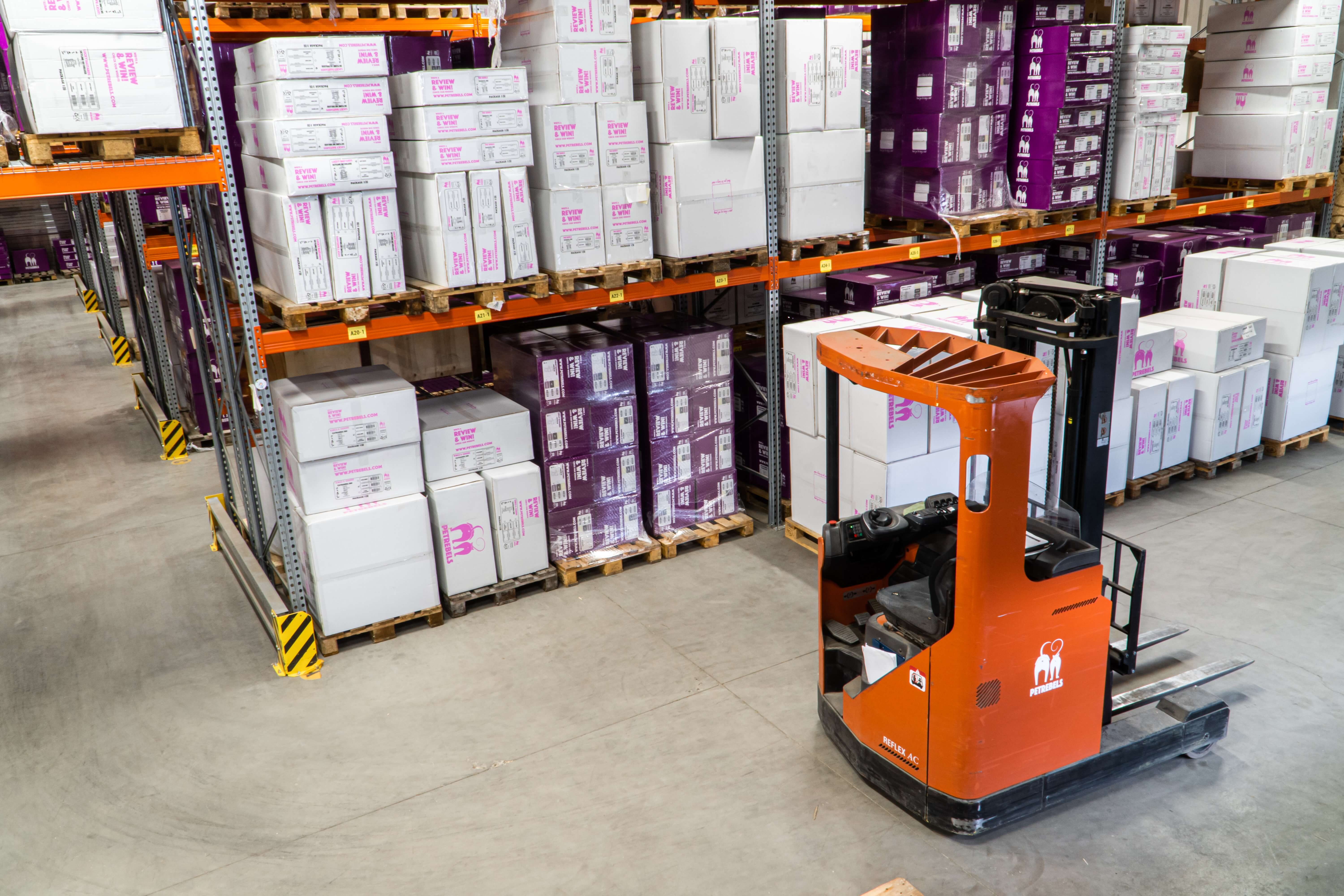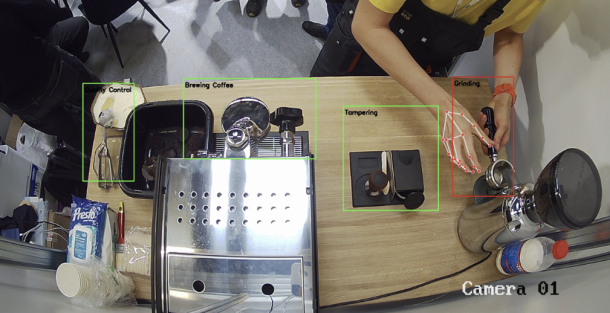How to Avoid Losing Millions: The Benefits of Automated Inventory Management
For any business that deals with inventory, efficient inventory management is critical to success. Inventory management involves a variety of tasks, including tracking inventory levels, monitoring sales and demand, and ordering new stock. Without effective inventory management, businesses risk overstocking or understocking, both of which can lead to significant financial losses. That's where and when automated inventory management comes in.
Automated inventory management refers to the use of software or other technology to automate various inventory-related tasks. This can include everything from tracking inventory levels to automatically reordering stock when supplies run low. In this long read, we'll explore the benefits of automated inventory management. Plus, we’ll provide tips for implementing it in your business.

Benefits of Automated Inventory Management
Reduced Labor Costs
One of the primary benefits of automated inventory management is reduced labor costs. Without automation, inventory management can be a time-consuming and labor-intensive task, requiring employees to manually track inventory levels, place orders and update records. By automating these tasks, businesses can free up employee time to focus on more valuable tasks, such as customer service or business development.
Reducing labor costs is especially important for small businesses with limited resources. By automating inventory management, small businesses can compete more effectively with larger companies that have more resources to devote to inventory management.
Improved Accuracy
Manual inventory management is prone to errors. Humans make mistakes, and even the most diligent employee can miscount or mistype inventory levels, leading to inaccurate data. This can lead to overstocking or understocking, both of which can be costly mistakes.

Automated inventory management systems, on the other hand, are designed to minimize errors. By using sensors, scanners, and other automated tools, these systems can track inventory levels with much greater accuracy than humans can. This helps to ensure that businesses always have the right amount of stock on hand, reducing the risk of stockouts or overstocking.
Better Inventory Visibility
Another key benefit of automated inventory management is better inventory visibility. With manual inventory management, it can be difficult to get a real-time view of inventory levels, particularly if inventory is spread across multiple locations or warehouses. This can lead to stockouts, overstocking, and other problems.
Automated inventory management systems, on the other hand, provide businesses with real-time visibility into inventory levels. This allows businesses to make informed decisions about when to order new stock and how much to order, reducing the risk of stockouts or overstocking.
Reduced Risk of Theft or Loss
Manual inventory management can also increase the risk of theft or loss. Without automated tracking systems in place, it can be difficult to identify when inventory is missing or has been stolen. This can result in serious financial losses for businesses.
Automated inventory management systems can help to reduce the risk of theft or loss by providing businesses with real-time visibility into inventory levels. If inventory levels drop unexpectedly, the system can alert employees to the potential theft or loss, allowing them to take action before the problem escalates.
Increased Efficiency
Manual inventory management can be a time-consuming and inefficient process, particularly for businesses that have a large amount of inventory to manage. Automated inventory management systems can help to increase efficiency by streamlining inventory-related tasks.

For example, an automated system can automatically reorder stock when inventory levels drop below a certain threshold, eliminating the need for manual reordering. This can save businesses a significant amount of time and effort, allowing employees to focus on more important tasks.
Improved Customer Satisfaction
Effective inventory management is critical to maintaining high levels of customer satisfaction. If a business runs out of stock of a popular item, customers may become frustrated and choose to take their business elsewhere. On the other hand, if a business has too much stock of a slow-moving item, it may tie up resources that could be better used elsewhere.
Critical part of any business
Inventory management is considered to be a critical part of any business. Proper inventory management ensures that businesses can meet customer demand, avoid stock-outs, and reduce unnecessary costs associated with carrying too much inventory. In today's fast-paced business environment, manual inventory management methods are no longer enough. They are slow, error-prone, and can lead to lost sales and lost revenue. Effective inventory management ensures that a company has the right products in stock, at the right time, and in the right quantities. When done poorly, it can lead to lost sales, overstocked warehouses, and increased costs. In fact, according to a study by IHL Group, retailers lose $1.75 trillion a year due to overstocking and out-of-stock items. This is why more and more businesses are turning to automated inventory management systems to help them avoid losing millions.
What is Automated Inventory Management?
Automated inventory management is the use of technology to manage inventory levels, track stock movements, and improve supply chain efficiency. Automated inventory management systems can include a range of technologies, such as barcoding, RFID (Radio Frequency Identification), and IoT (Internet of Things) devices. These systems can be integrated with other business applications, such as ERP (Enterprise Resource Planning) systems, to provide a complete view of inventory levels, sales trends, and supply chain performance.
How to Implement Automated Inventory Management
Identify Your Inventory Management Needs
Before implementing automated inventory management, it's important to identify your inventory management needs. What specific tasks do you really need help with? Do you need help tracking inventory levels? Do you need help with ordering and reordering stock? Do you need help with managing multiple locations or warehouses?
Identifying your specific needs will help you choose the right software or technology to meet those needs.
Choose the Right Automated Inventory Management System
Once you've identified your inventory management needs, it's time to choose the right automated inventory management system. There are a variety of software programs and technologies available, each with their own strengths and weaknesses.
Some popular options include:
Barcode scanning technology: This technology allows businesses to track inventory levels in real-time using barcode scanners. Barcodes can be affixed to each item, allowing businesses to quickly and accurately track inventory levels.

RFID technology: RFID (radio frequency identification) technology uses tags to track inventory levels. These tags can be read by sensors, allowing businesses to track inventory levels in real-time.
Inventory management software: Inventory management software is designed to help businesses track inventory levels, manage orders and reorders, and generate reports on inventory performance.
When choosing an automated inventory management system, it's important to consider your specific needs and budget.
Integrate Your Automated Inventory Management System with Other Business Systems
Once you've chosen an automated inventory management system, it's important to integrate it with other business systems. This includes your point-of-sale (POS) system, accounting software, and any other systems that rely on inventory data.
Integration can help to streamline business processes and reduce the risk of errors or discrepancies.
Train Your Employees
Implementing automated inventory management requires a shift in business processes, and it's important to ensure that your employees are trained on the new system. This includes training on how to use the new technology, as well as training on new processes and workflows.
Make sure to provide ongoing training and support to ensure that your employees feel comfortable using the new system.
Monitor and Adjust as Needed
Even the best automated inventory management system requires monitoring and adjustment. Make sure to regularly review inventory performance reports and adjust your inventory management strategies as needed.
By continually monitoring and adjusting your inventory management processes, you can ensure that your business is operating at peak efficiency and maximizing profits.
Conclusion
Automated inventory management can help businesses reduce labor costs, improve accuracy, increase efficiency, and improve customer satisfaction. By following the steps outlined in this article, businesses can implement automated inventory management and reap the benefits of streamlined inventory management processes. Choose Inventory Control, integrate it with other business systems, train your employees, and monitor and adjust as needed. With the right approach, automated inventory management can help businesses avoid losing millions and achieve long-term success.
Let's wrap it up! The future of inventory management lies in the integration of advanced technologies. A prime example is the video monitoring system with AI analysis and ERP Integration by 5controlS. This system not only automates the process but also provides real-time data and insights, enabling businesses to make informed decisions and avoid costly mistakes.
Our software products are FREE. We believe in open-source solutions and community collaboration, which is why we’ve made our code available – visit our GitHub page.
With 5controlS, you’re not just adopting a tool, you’re joining a community dedicated to revolutionizing inventory management.












